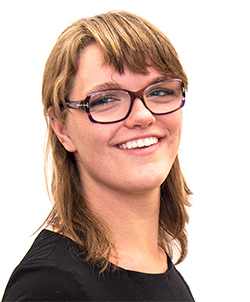
When people think of disability, they typically picture the handicap symbol: white wheelchair and blue square. The handicap symbol is representative of physical, visible disability. But there is a whole other kind of disability that is not represented in that symbol: invisible disability.
Invisible disability is overlooked by both the disabled community and the general public for essentially the same reason — persons with invisible disabilities “don’t look disabled.”
Among every minority community, there is a social hierarchy. Based on this social hierarchy, some narratives are deemed more important than others because they can “better speak to the minority experience.”
In this situation, a person with a visible disability is thought of as “more disabled” than a person with an invisible disability. People are more inclined to believe in what they can see, even among their own peer group. A physical disability signifies an identity — it is a tangible, physical representation of a status for the rest of the world to see. The invisibly disabled lack that tangible signal.
In September of my freshman year, my friend, who is also a wheelchair user, called me “crip,” as in crippled. He meant it as a term of endearment— a colorful nickname, a badge of pride, a signifier of a common identity.
But I was taken aback — I literally took a step back. Wasn’t “crip” a slur?
My wheelchair-using friend laughed and explained that we were comrades: “Partners in Physical Disability.” Fellow crips. There is community in a common minority.
But part of that disabled minority is ignored. The narratives of the invisibly disabled are silenced when we try to identify “Partners in Physical Disability” by exoskeletons.
But today, I move to validate that narrative and remove the duct tape of socialized minority oppression that has muffled the voices of our invisibly disabled peers.
To do so, I turned to Maddy, my brilliant friend who carries her Lupus like a Louis Vuitton purse. For Maddy, her invisible disability is an accessory by which she is not defined — but never leaves home without.
We sat down to illuminate the invisible on a warm Thursday. I plopped down next to Maddy on a rough wooden picnic seat, situating my body so that it faced hers. Around us, conversation buzzed, but in the three feet between her body and mine, there was an anticipatory quiet.
Maddy’s eyes met mine as she proclaimed, “It’s actually a lot harder than you would think.” People see in her a bubbly personality and solid work ethic. Professors and students alike have doubted Maddy’s disabilities because of her apparent physical capabilities.
In other words, Maddy doesn’t look disabled.
In high school, Maddy was a college-bound soccer player. Colleges scouted Maddy — her skills on the field ensured she would have a place in the world of higher education. Her physical prowess made her a player to be watched.
But under those watching eyes, Maddy began to fall. It began with the little things — soreness after practice and pain in her fingers. She popped a couple of Tylenol pills and thought the pain would disappear in a few days. But those days turned into weeks, as Maddy’s runs slowed to walks, and then from a walk to a hobble.
“There was a three-month period of serious pain and joint stuff that was going on, and I just wasn’t telling my parents about it. … Three months later, I was getting my sister to put my shoes on in the morning for me because … my fingers couldn’t tie my shoelaces.”
As the joint pain became more severe, miniscule movements magnified in difficulty.
“It got to the point where I couldn’t lift my spoon in the morning to put cereal in my mouth. One morning, I dropped the spoon while I was trying to eat breakfast, and my mom was like, ‘That’s it! I know you’re sick. We’re taking you to the doctors!’ ”
When you think of disability, you don’t picture the autoimmune system. Lupus is one of the most difficult conditions to diagnose because its symptoms mirror those of other ailments. Maddy didn’t know until a team of doctors ran two specific blood tests — it took months.
With flowing brown hair, navy Converse and a sunny smile, Maddy oozes easy-breezy college millenial. But her invisible disability takes a toll.
Drumming her fingers on a wooden table outside a campus cafe, Maddy spoke about how she manages severe joint pain and how her life is all about balance — managing her medications, going to doctor appointments and becoming her own best advocate.
And a balance between invisible disability and doing something more: Maddy takes her disability in stride. She works with the Lupus Foundation, and she views her life as better because she got sick.
Adversity molds appreciation — baseline, we’re alive. So today is a good day.
People cannot be summated by a symbol. Disability is as vast and varied as the lives it touches. The U.S. Census Bureau reported that 59.7 million folks self-identified as persons with disabilities.
We are one of the largest minorities on Earth, and all of our voices deserve to be heard. Peel off the duct tape. Believe in what you cannot see, because the narratives of invisible disability are just as real as the white wheelchair in a blue square.
التعيقات (1)
التعليقات مغلقة.
This is a fab article. You are very astute and your viewpoints are solid and well-written. You must have worked diligently on this. Thank you.